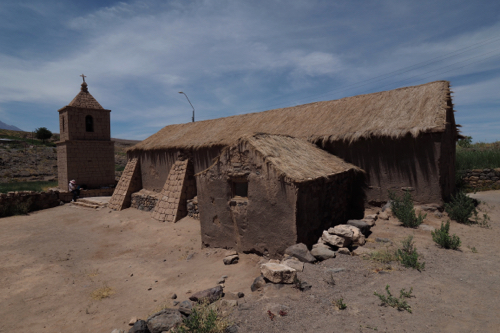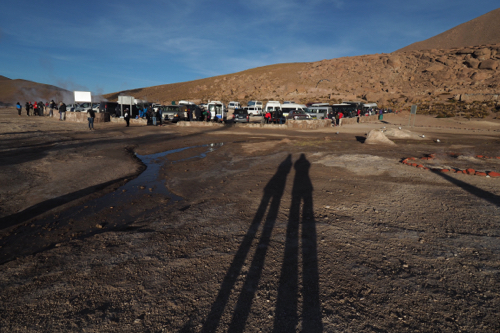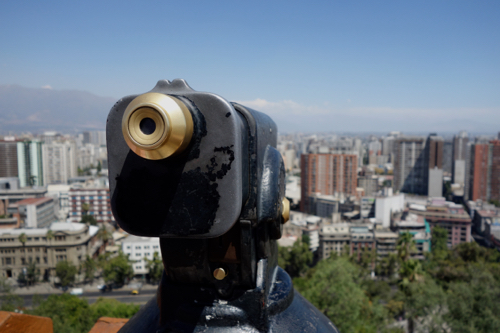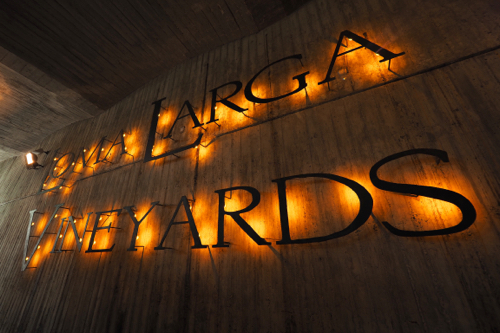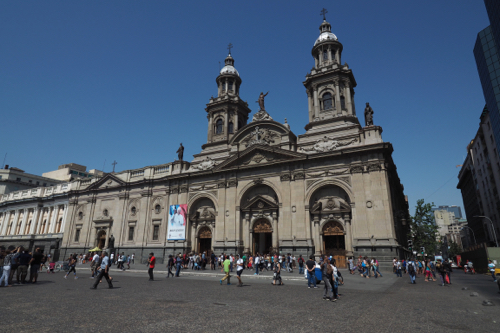January 15, 2018. Hotel Desert Tayka Ojo de Perdiz, Bolivia to San Pedro de Atacama, Chile.
I got up at dawn to get the early light over the High Dessert, before we crossed over into Chile. We were told that the there was no rush over breakfast or checking out of the hotel – so we didn’t.
Poor planning and a selfish attitude by Lillian, who wanted to sleep in, meant that we were chasing our tails all morning.
There seemed to be a degree of panic between the driver and Lillian. We were then told that we had to be at the Bolivian, Chile border by 1pm, before it closed for lunch.
Now we were driving way to fast on roads that were not designed for speed.
We felt rather unsafe so I told the driver, to slow down.
Lillian was probably one of the worst guides we have ever had. So much so that she could be the subject of an entire blog.
However I won’t be that cruel.
We were very glad to reach the Chilean border and see the last of Lillian.
Before we arrived in Chile we did get to quickly pass by a few interesting places.
Lake Colorada was alive with more flamingos, the Sun of Tomorrow Geysers or Geyers Sol de Mañana and the Thermal Springs of Polques were squeezed in before we had to cross into Chile.
Entering Chile the road suddenly changed from a dirt track to a sealed road.
And there was no Dakar Rally.
January 16, 2018. San Pedro de Atacama, Chile.
Max was the guide for our tour to Salar y Laguna/Piedras Rojas con Entrada.
We were on the edge of the Atacama Desert, the driest, non polar place, on earth.
This plateau is a 1,000 kilometre strip of land on the Pacific coast. It’s aridity is as a result of a constant temperature inversion of the cool Humboldt ocean current meeting a Pacific anticyclone. This causes the temperatures to rise with altitude, not fall as they normally do.
Our first stop was to see the Jére Oasis, a verdant patch of green in the brown of the desert. This small strip of land is well farmed with fruit trees and crops running along the river’s edge.
Next was Chaxa Lake in the National Flamingo Reserve.
The name Flamingo comes from the Portuguese and Spanish and means ‘flame-coloured.’ Their colour ranges from pink to bright red. The brighter the colour the healthier the bird.
The species dates back to the Cretaceous Period, 130 million years ago.
For at least 20 million years Flamingos once wandered Australia. About one million years ago they disappeared as the centre of the country dried out and their watery habitat vanished.
Back then there were more species of Flamingos in Australia than there are currently in Africa or South America.
There are a number of lakes within the reserve and we wandered around the edge of Altiplanic, Miscanti and Miñiques Lagoons.
This was relatively ‘soft’ travel compared to what we did in the High Desert of Bolivia.
A lot of It was in paved or salt roads. There was some corrugated dirt roads as well, especially on the climb to the Flamingo Reserve, which was at 4,272 metres.
We had lunch at Cocinería Bartolomé, in the small town of Socaire. The tour group was made up of a number of nationalities and not surprisingly most of them spoke English.
Mining towns like Socaire received bribes from the mining companies like new churches and schools. This is a small compensation for the environmental damage that they cause.
The town had two churches, the newest being funded by the El Laco iron ore mine.
On the return drive to San Pedro de Atacama we stopped off at Toconao. The main feature of this small town is Saint Lucas Church and the nearby bell tower which was built in 1750.
January 17, 2018. San Pedro de Atacama to Santiago, Chile.
Yet another early start, this was for a 4:30am pick-up, as we were off to see the sun rise at the Geysers del Tatio.
We were rugged up for below freezing temperatures, even though it was mild in San Pedro de Atacama.
The drive to the Geyser was about 90 minutes, in the dark.
Most people slept and so did I.
When we reached Geysers del Tatio and got out of the bus, it was rather chilly so we were glad of the warm clothes.
Our guide was Francesca and she had very good English. We were the only non Spanish speakers on the tour, so all the English commentary was directed at us.
After being escorted around Geysers del Tatio for 35 minutes we returned to the bus for breakfast.
This was a rather meagre spread.
We were then given time to explore the Geyser field. The sun had risen by now and the early morning light behind the billowing plumes of steam was stunning.
El Tatio sits at 4,320 metres above seal level. It is the third largest geyser field in the world and the largest in South America.
Geyers are caused by a build up of hot subterranean water pressure. This is released through cracks in the earth’s crust. The water can reach temperatures of 85° C. The fumaroles or steam vents are created when the steam meets the cold air. They can reach a height of 10 metres.
El Tatio is part of the Central Volcanic Zone and there are over 50 volcanoes in the surrounding area.
From the geysers we then visited the Putana Wetlands, an oasis in the dry desert. It was swarming with water birds and there was even a group of Vicuñas who came down for a morning drink.
Vicuñas are related to the Llama and one of two wild South American camelids, the other is the Guanaco. They have been a protected species since Inca times. They are valued for their wool, which can only be shorn every three years and has to be caught in the wild.
Vicuñas wool is both soft and warm and therefore very expensive.
Next was the Village of Machuca with just 20 houses. The people of this tiny settlement seem to rely on the tourists, who pass by after visiting the geysers.
There were far more tourists than villagers, who were busy selling, singing, cooking and generally finding ways to separate the tourists from their Chilean Pesos.
The village did have a quaint white church, San Santiago and the tourists were also swarming over that.
After that it was a short stop to see the flamingos at the Machuca Wetlands.
We were a little over flamingos by now.
We returned back to the hotel around noon and went to our new room to change, as our old room had been booked out. We were flying to Santiago late in the day and needed a late check out. Firstly to get out of our cool climate clothes. It was 30°C+ when we arrived back and we both had thermals on, we also needed to re-pack for the flight.
There was confusion at the airport in Calama. We didn’t get a boarding pass and our electronic ones didn’t have the departure gate indicated – and there were no monitors.
Fortunately there were only five gates, so I wandered around until staff turned up and then I asked them where they were going.
January 18, 2018. Santiago, Chile.
We were in Santiago for four nights. We needed to do some ‘housekeeping, as well as sightseeing.
Thea needed a trim and I a haircut. We also had to book the last of our trip before Antarctica.
Then there was a power cut, apparently the entire city centre was effected. We later discovered a truck had flattened a power pole.
It’s a good thing that hairdressing is predominately a manual operation.
However we had to pay for our haircuts with cash as the credit card machine wouldn’t work and Thea had to leave with wet hair as the dryer needed power. Then we couldn’t get any more cash out as the ATMs were closed.
We couldn’t afford lunch with the money we had left, so we went for a walk instead.
Santiago, the capital of Chile, has a population of nearly 8 million people, making it one of the largest cities in the Americas.
There are nearly 18 million people in Chile, so Santiago is an important social, economic and political centre.
Santiago produces over 50% of Chile’s GDP.
It was founded by the Spanish in 1541 and sits within the central Maipo River valley, about 500 to 650 metres above sea level.
This was an enjoyable change from the high altitudes we had experienced over the last few weeks.
Time to breath easy and no hallucinations.
Our walk took us to Santa Lucia Hill which is situated in the centre of Santiago. There is a 65,300 square metre park containing buildings, statues, stairways, fountains and a viewpoint, sitting 69 metres above the city.
The hill is a remnant of a 15 million year old volcano.
January 19, 2018. Santiago, Chile.
We had booked a wine tour in the Casablanca Valley which involved visiting three different wineries, including lunch at the last one.
Our guide for the day was Ayelen, which means Blue Ribbon or The Girl That Smiles.
It was foggy and rather chilly when we arrived at Bodegas Re, our first vineyard. Ayelen assured us that the weather would get better during the day.
The Casablanca Valley is situated on the coastal plane between Santiago and Valparaiso. It is the newest and fastest growing wine region in Chile and produces some of their best wines.
Cool climate whites such as Chardonnay and Sauvignon Blanc are a specialty. They also make some excellent reds such as Pinot Noir, Merlot and Syrah.
The climate is similar to parts of the Napa valley in California but the prices are no where near as inflated as they are there.
The Humbolts currents, which plays such an important role in the Atacama Desert, also influences the style of wine that is produced in the region.
The Spanish conquistadors and missionaries first brought vines with them from the newly conquered Peru around 1554. There was then an influx of French winemakers in the late 20th century. Now Chile is the fifth largest exporter of wine in the world and the seventh largest producer.
Only a very small number of Chileans consume wine with most of it being exported.
Bodegas Re prided themselves on their individual style and alternative approach to wine making. They employed the old methods of clay barrels and hand crafted wines, similar to what we had seen in Georgia.
They only keep 8% of their grapes and only 10% of their wine is for export.
Next was Loma Larga Vineyards or Long Hill, which was an entirely different story.
Their approach was typical of the area with a very contemporary approach using modern methods and stainless steel tanks.
80% of their wine is for export.
Lunch was on the verandah at House (House of Morandé Casa de Vino), overlooking the vineyard. As promised the sun was now shining and the sky blue.
We returned to Santiago late in the day and had a brief walk around the Bellas Artes district near our hotel.
In fact the Academia de Bellas Artes was almost opposite.
This Neo Classical building was designed by the Chilean architect Emile Jéquier and built in 1880, It was the first art museum in Latin America and currently there are over 3,000 pieces in its collection.
January 20, 2018. Santiago, Chile.
Today was set aside to explore more of Santiago, so we joined the Hop-On Hop-Off Bus. We purchased the Premium ticket which included the Teleférico up to Cerro San Cristóbal. This has an excellent view of this sprawling city.
Normally you would take the Funicular but that seems to have had more downtime than the Arthur’s Seat chairlift.
It takes 2.5 hours to do the complete trip and it was well worth it. The tour not only covered the central city area but also included a number of the more interesting inner suburbs.
The bus is run by Turistik, as is is everything else on the tourist agenda in Santiago.
They run both the Teleférico and the Funicular as well as operate a large number of tours around and out of the city.
Santiago is the most European City we had visited so far in South America. Due to the warmer climate and huge Spanish influence there are many parks, gardens and outdoor cafes.
We tried to eat outside every night we were there.

